Join us inside our Five Marys shop in Fort Jones, CA! This photo is our shop in 1904 – interestingly enough, it was the original town butcher shop since the 1800’s! We think it was called Burton’s Butcher Shop.
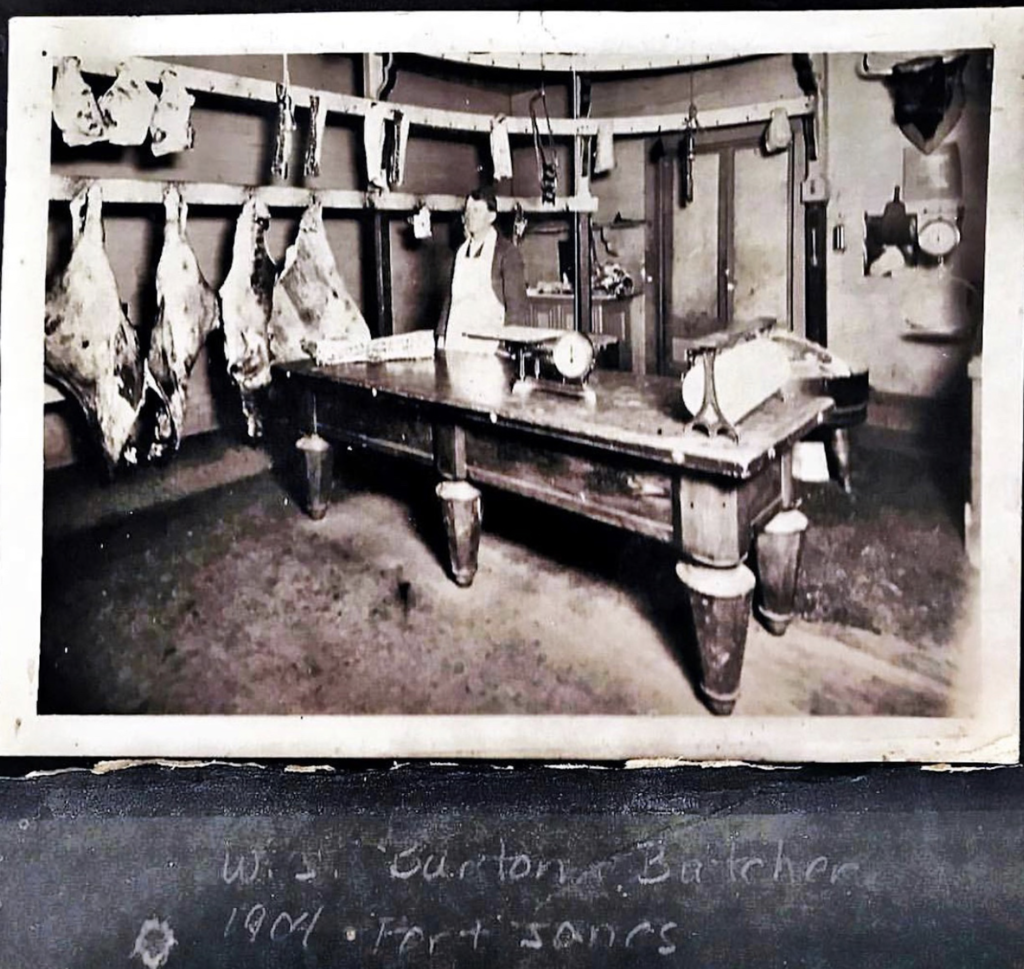
Since then it has been turned into a mercantile and feather shop and the original rails are still up in the back of the shop. I just love that it has come full circle and is now home to our Five Marys meats. Here it is today!

Once we get the packages back from the butcher (soon to be from Five Marys Custom Meat Co!!!) we ship them out directly to our customers in our special insulated boxes.
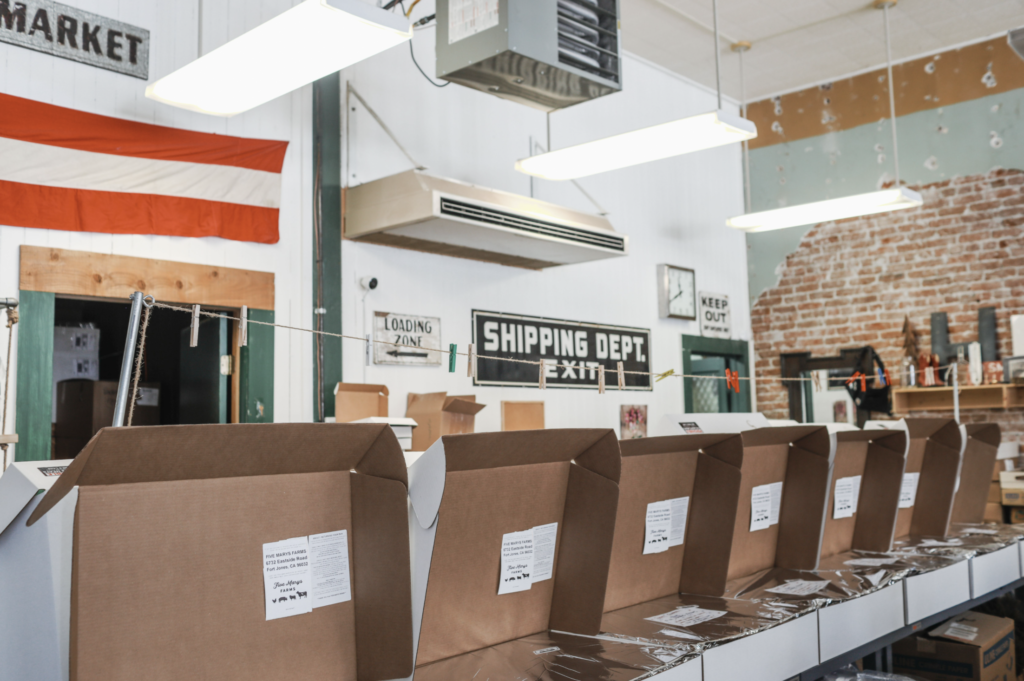
We use our actual M5 cattle brand on the boxes, so you can see when these show up on someone’s doorstep, they know they’re from Five Marys.
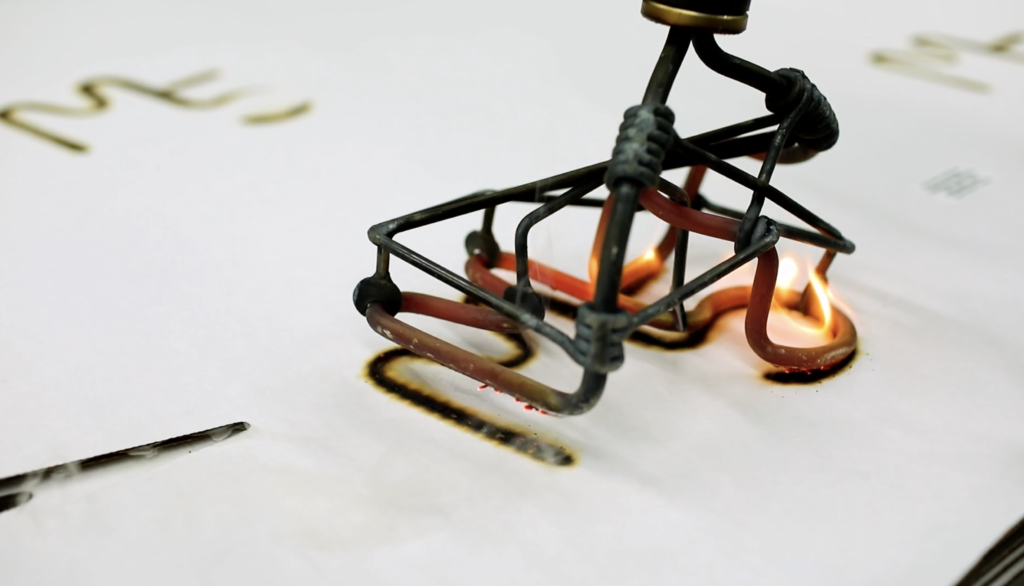
Some people shy away from frozen meat because they think that it’s lesser quality, but actually a lot of meat is frozen in transport and then thawed at your butcher. Our meat is all flash frozen at the butcher and frozen entirely until it gets to you. Then you get to decide when to thaw it and cook it for your family.
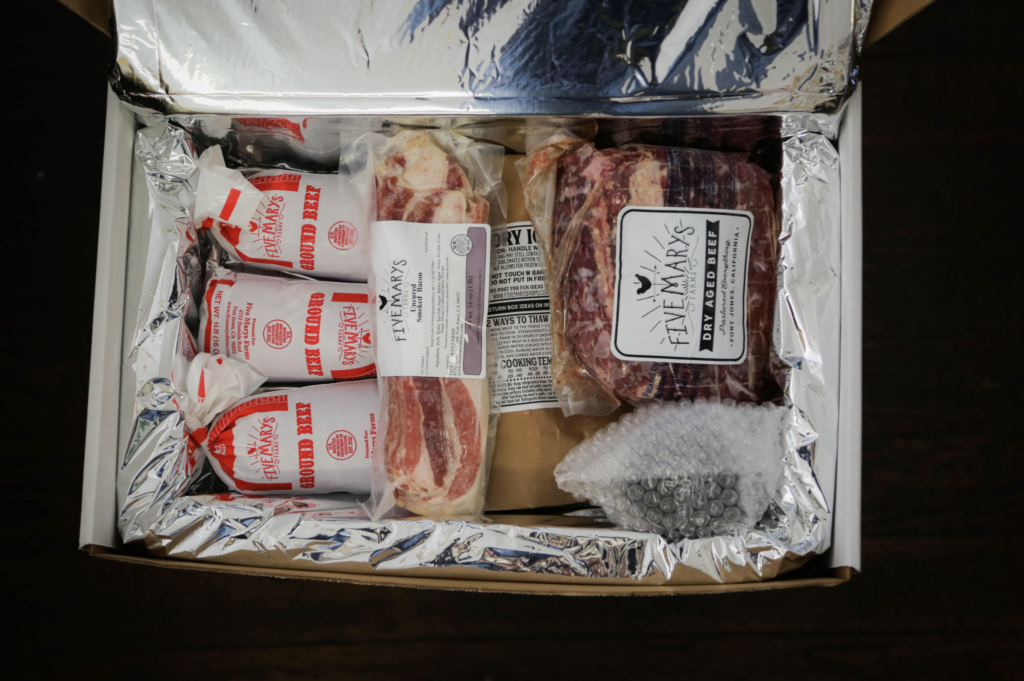
Inside our boxes we have a custom insulated liner – this gives us an R-Value. That means the insulation is good enough to keep our meat frozen, but we have to add dry ice.
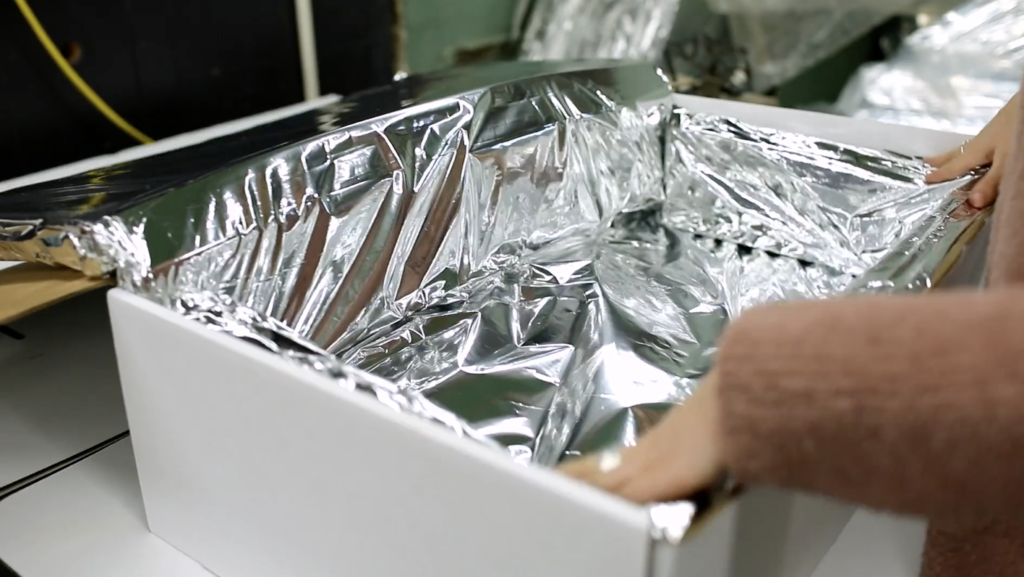
We tape every end of the box so that there’s no air movement and that will keep the dry ice in there longer. We make sure there’s a special note or card to our recipient as a thank you for buying from Five Marys and the box is ready to go!
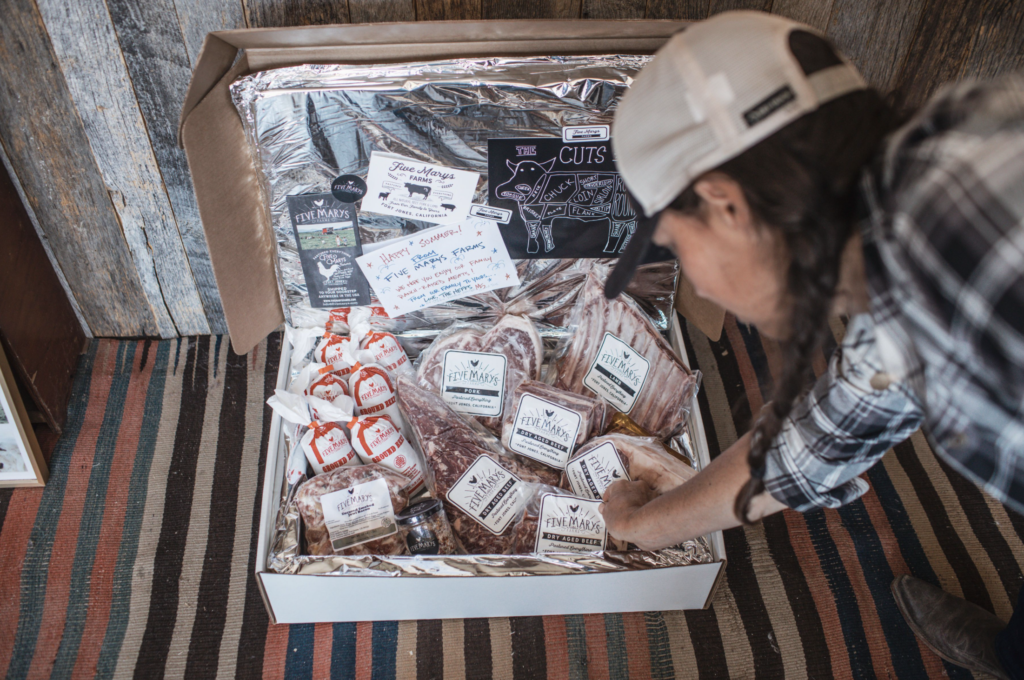
Dry Ice!
Five Marys meat boxes are all packed with dry ice pellets to ensure that the meats arrive frozen. Dry ice is carbon dioxide in solid form and helps bring down the internal temperature of our boxes.
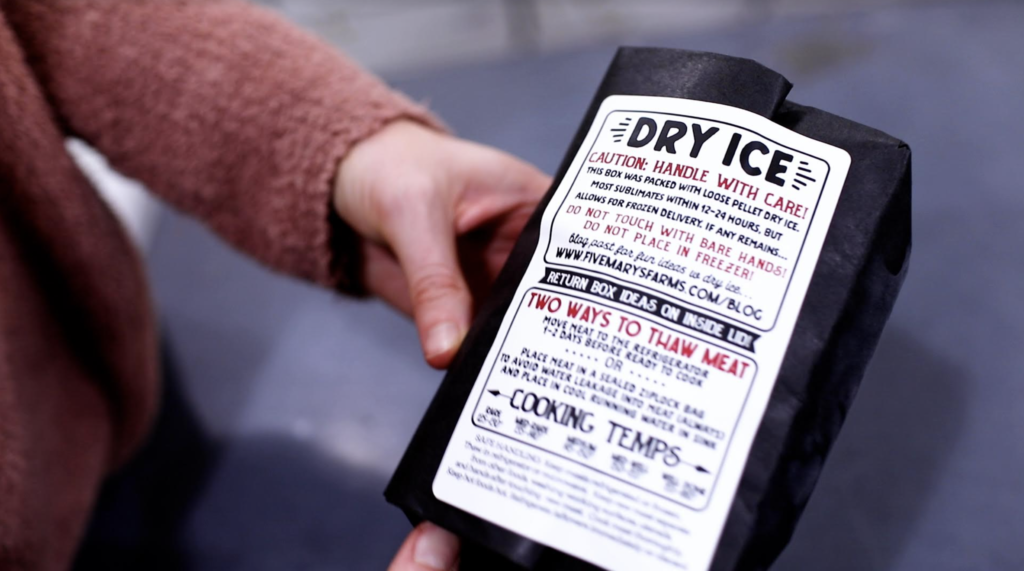
The dry ice will sublimate (right into gas form – never as a liquid!) in the first 12-24 hours, so it is normal for your dry ice bag to be empty by the time it gets to your house.
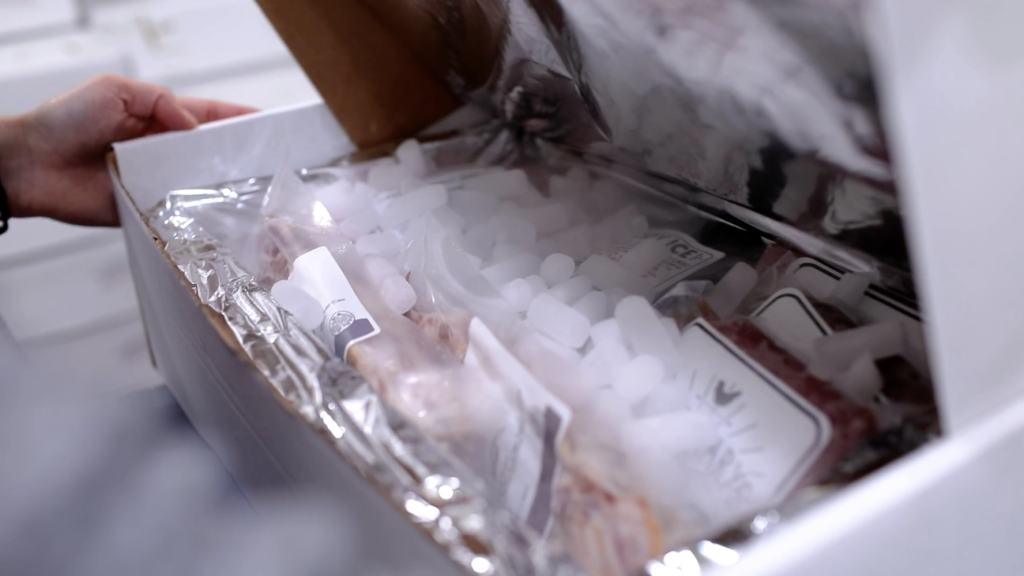
If there is any left, be sure not to touch with bare hands – it will burn your skin just like a heat burn! Do not place dry ice in the freezer – it lowers the temperature so much that it may break your condenser.
Instead, simply let it evaporate, or try a few of these fun experiments…
• Exploding Glove or Balloon
Put a small to medium sized piece of dry ice in a latex glove or balloon and watch it inflate while it sublimates!
• Disappearing Ice!
Place a regular ice cube and a cube of dry ice side-by-side on separate plates and watch the dry ice mysteriously disappear! Unlike the regular ice cube, the dry ice will disappear without a trace of water as it sublimates right into the air.
• Frozen Bubbles
Put about an inch of warm water in the bottom of a large box, glass container, or aquarium. Add a few pieces of dry ice (using tongs or safety gloves). During this process, the dry ice will appear to be smoking as it transforms into a combination of carbon dioxide and water vapor. You can blow bubbles into the container using a bubble wand and a bottle of bubbles. The bubbles will appear to be floating in midair inside of the container, but these bubbles are actually floating on carbon dioxide!
• Bubbly Beverages
Add dry ice to the punch bowl to make a fun spooky beverage – this is fun anytime of year, but especially around Halloween!
• Smoke Bubbles
Combine warm water and a few drops of liquid dish soap in a tall glass or cylinder. Carefully place the dry ice into the soapy water using gloves or tongs. With the liquid dish soap in the mix, the soap in the water traps the carbon dioxide and water vapor to form a bubble. Add some food coloring to the water for colorful bubbles in the mix. You can also add a neon glow stick into the water for some fun!
Thawing Your Meat
Thawing your meat takes a little thinking ahead! Move your meat to the refrigerator 1-2 days before you’re ready to cook. If you forget to take out your frozen meat ahead of time, place your meat in a sealed ziplock bag to avoid water leakage and place it under cool running water in the sink. You can also refer to the USDA website to read their safety protocol guidelines.
Cooking Temps
Cooking times and temperatures vary based on the size and shape of your cut and the way in which you prepare it. To make sure your meat is cooked to your liking, use a meat thermometer to measure the ‘degree of doneness.’ Insert your thermometer though the side of the cut, and remove the meat from heat when the thermometer reads 5-10°F lower than your desired doneness (the temp will continue to rise as the meat rests).

- RARE : 125 – 130°
- MEDIUM RARE : 135 – 140°
- MEDIUM : 145 – 150°
- MEDIUM WELL : 150 -155°
- WELL DONE : 155 – 160°
Want to Learn More?!
If you’re interested in learning more about Five Marys meats and how families across the country butcher their own meats, join our M5 RANCH SCHOOL program where we have a WHOLE WORKSHOP on butchery!
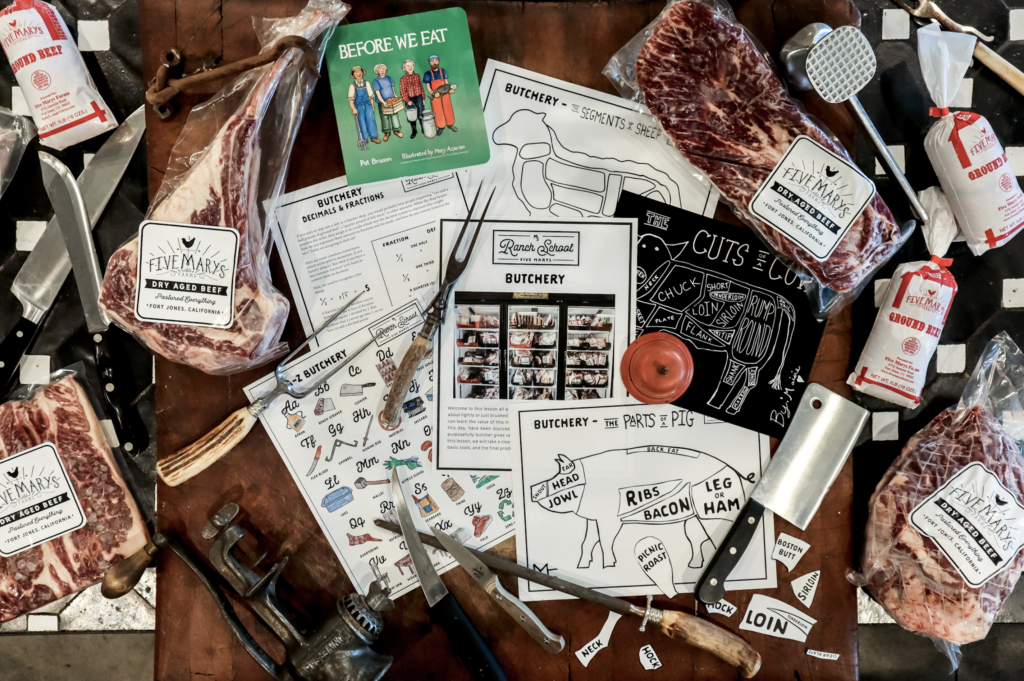
Brian will take you behind the scenes at the site of our Five Marys Custom Meat Co. and show you our blueprint plans!
In the meantime, here’s a free Ranch School activity so you can learn the parts of a pig!

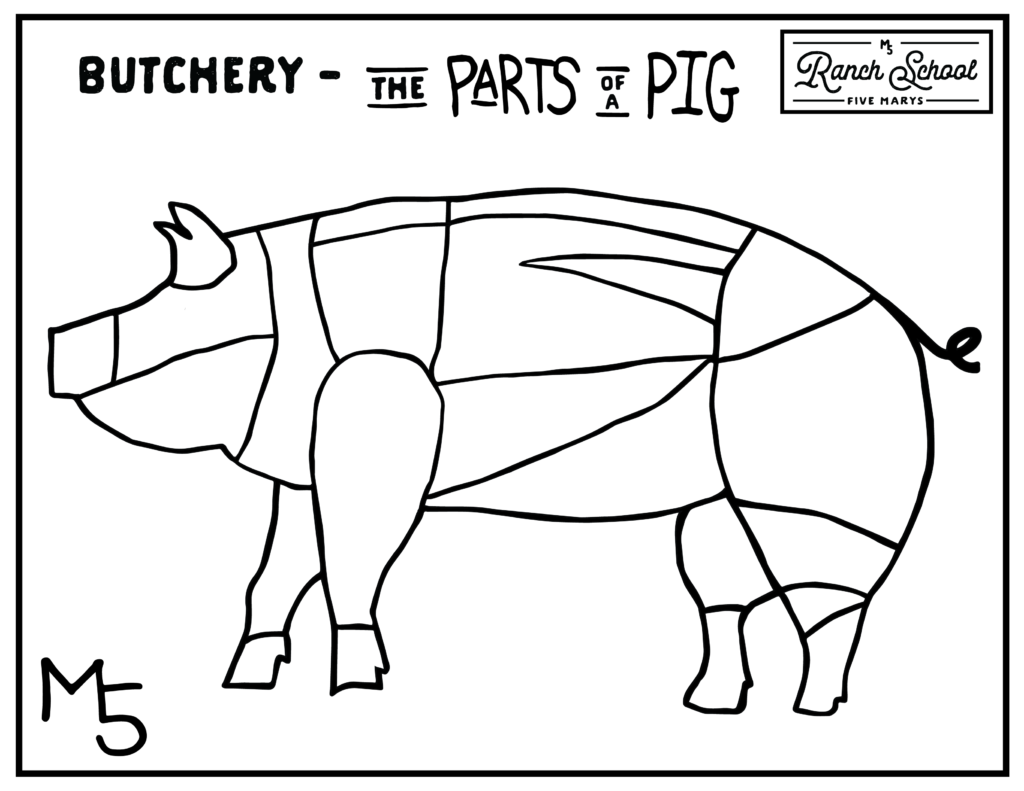
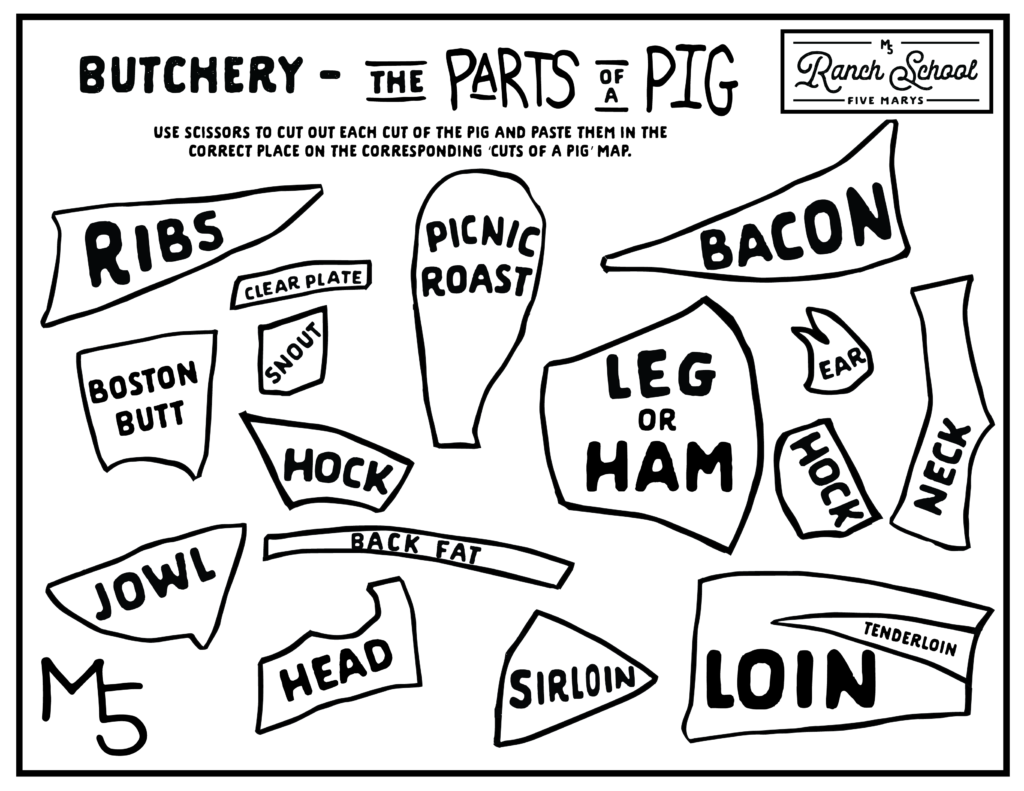
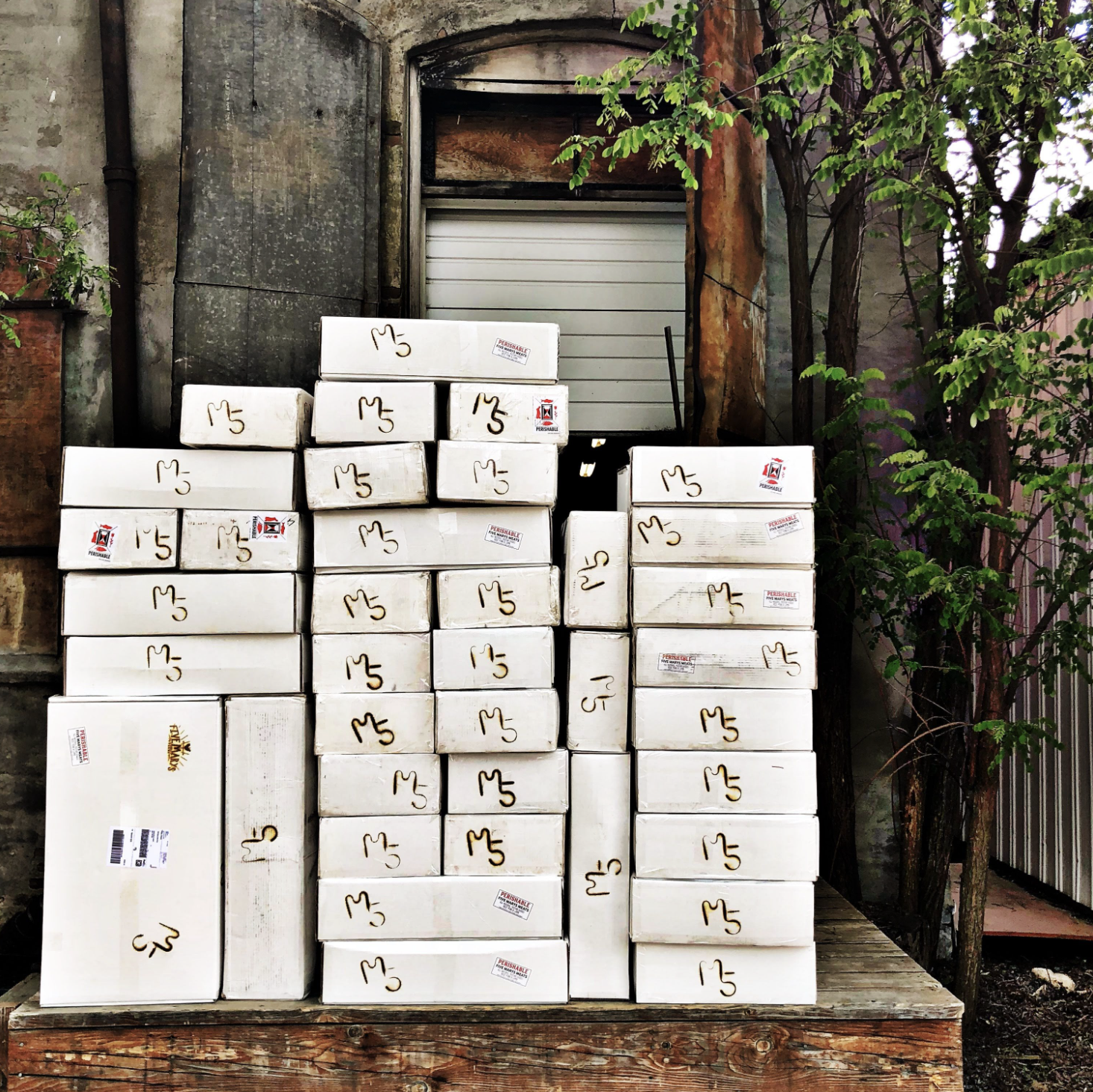
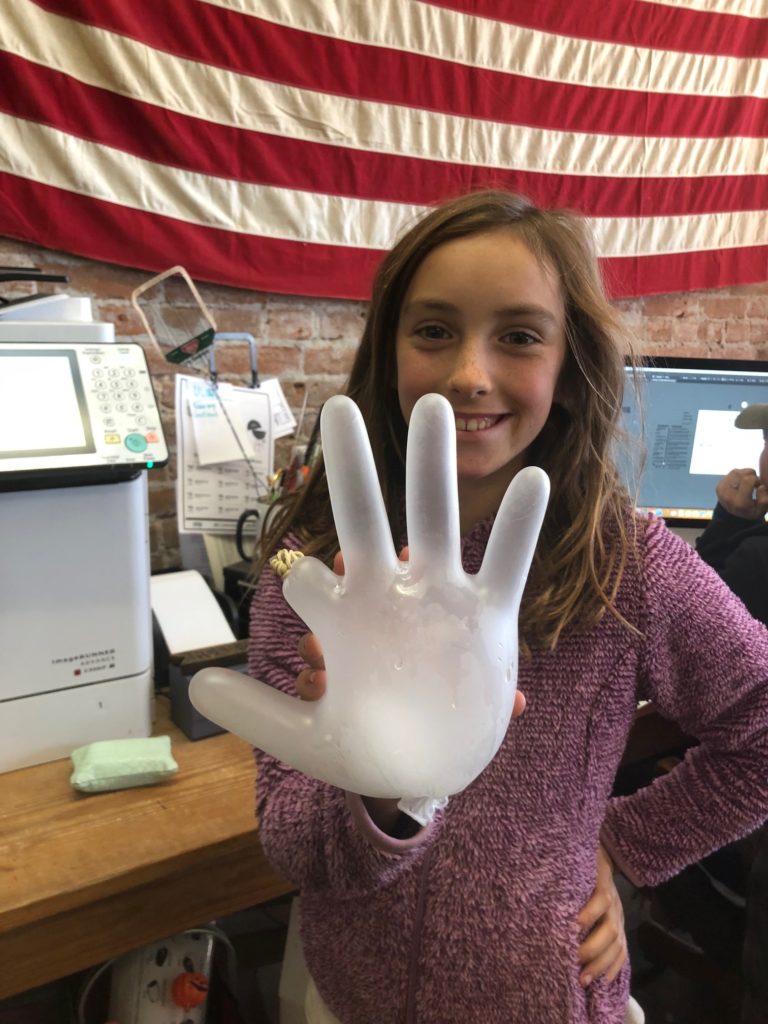
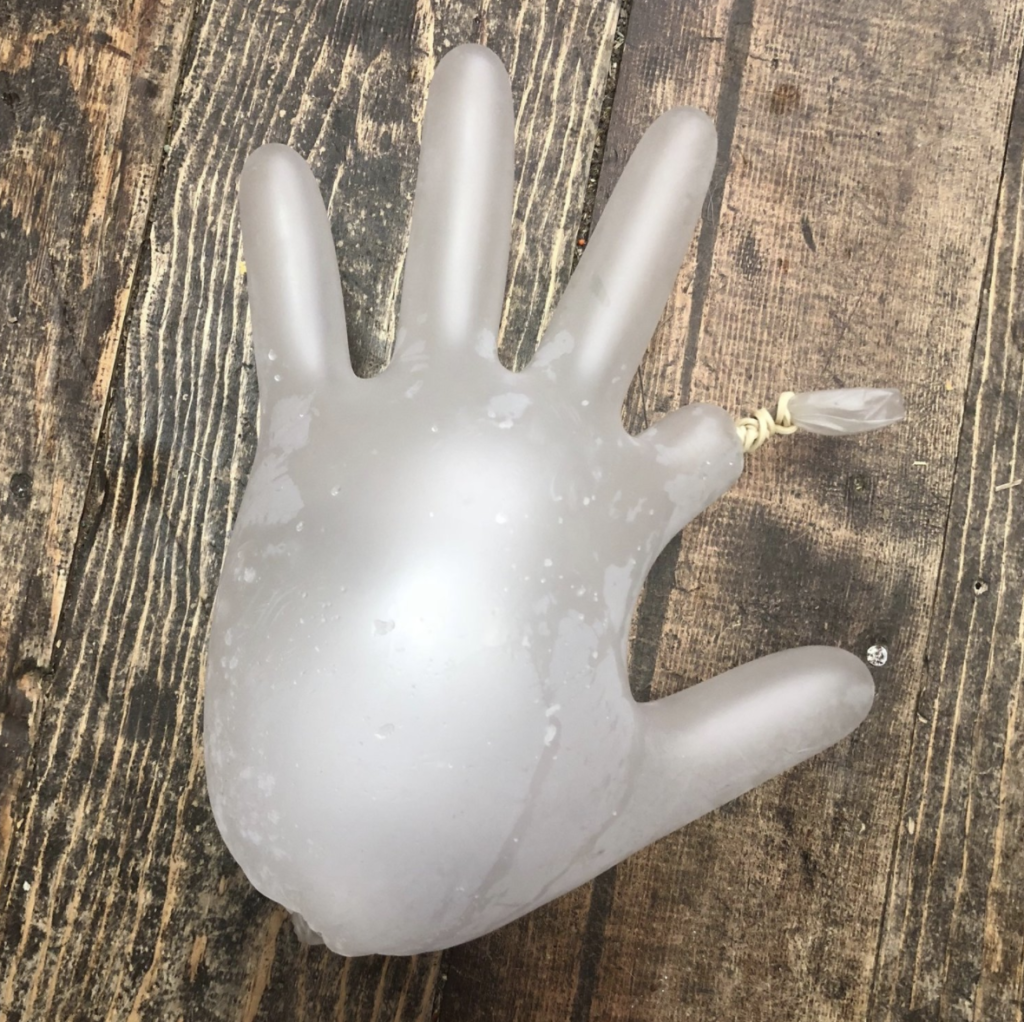
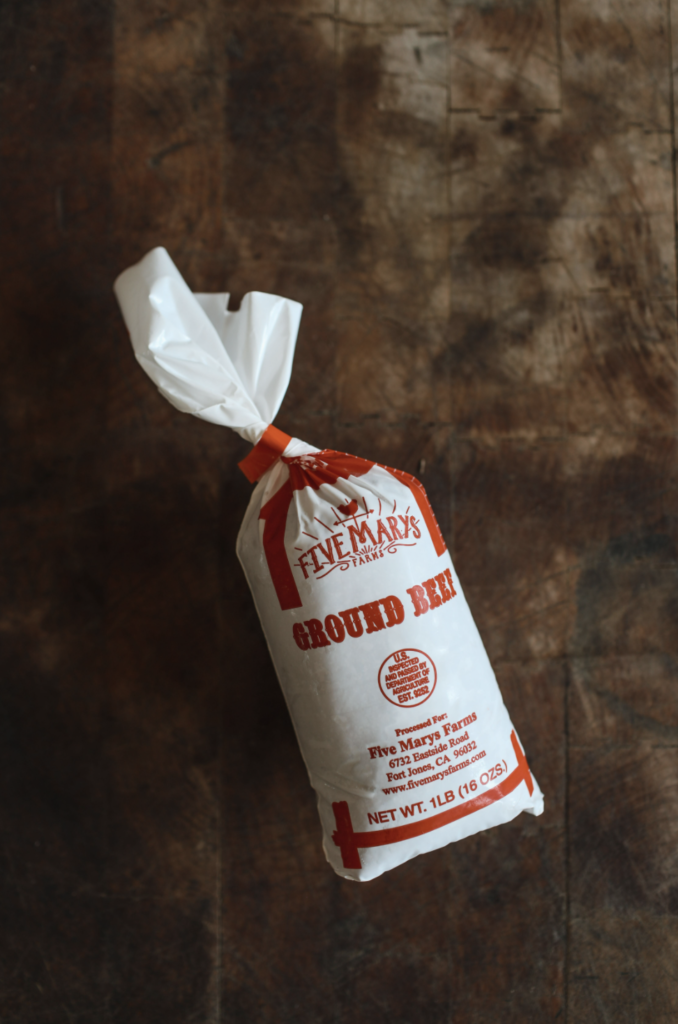

You raise some of the best meat I’ve ever had. Thank you for all you do as stewards of the land and the care you give your animals.